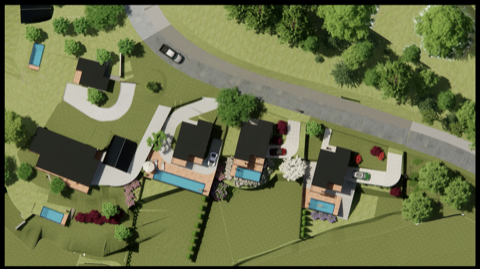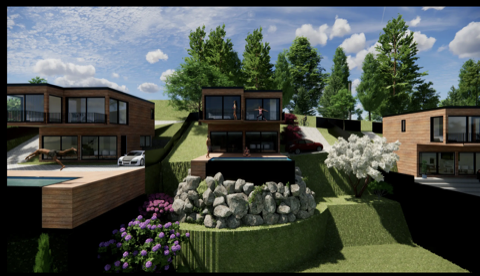Prefabricated houses, technically known as modular constructions, now have to comply with the rules that exist for buildings in general, namely those laid down in the General Regulations for Urban Buildings (RGEU). This means that they are subject to licensing or another form of prior control, depending on the circumstances of each specific case. The urban licensing simplex – most of the 26 measures come into force on 4 March, but some have already taken effect since 1 January 2024 – also stipulates that allotment projects for new buildings will also have to include areas for “public housing, controlled costs or affordable rent”.
 With regard to prefabricated/modular houses, which have been gaining in popularity recently – they can be cheaper than “traditional” houses and are quicker to build – they will have to comply with the rules that exist for buildings in general, namely those laid down in the RGEU, writes the newspaper Jornal de Negócios.
With regard to prefabricated/modular houses, which have been gaining in popularity recently – they can be cheaper than “traditional” houses and are quicker to build – they will have to comply with the rules that exist for buildings in general, namely those laid down in the RGEU, writes the newspaper Jornal de Negócios.
According to the publication, some people use modular homes in areas where they are not allowed to build, such as along the coast. In these cases, landowners use demountable houses, bungalows or even trailers. Now, with the entry into force of the simplex as a result of the new urban planning licences (Decree-Law no. 10/2024), this type of situation becomes more difficult and subject to rules that, if not complied with, can lead to fines being imposed and municipalities being able to demand that the houses be removed.
At issue are constructions that are “permanent in nature” and are distinguished by “using modular construction elements or systems, structural or non-structural, partially or totally produced in a factory, previously connected to each other or on site, regardless of their removable or transportable nature”.
New construction projects obliged to make room for public housing
 However, according to the publication, the simplex law also stipulates that allotment projects for new buildings, which are already obliged to set aside areas for green spaces, road infrastructures or equipment, will now also have to include areas for “public housing, subsidised housing or housing for affordable rent”.
However, according to the publication, the simplex law also stipulates that allotment projects for new buildings, which are already obliged to set aside areas for green spaces, road infrastructures or equipment, will now also have to include areas for “public housing, subsidised housing or housing for affordable rent”.
A measure that is raising doubts among urban planning experts. “Depending on the characteristics and needs of the site, the council sets the applicable rules, such as what should be reserved for green spaces, road infrastructure, among others,” said Isabel de Lima Mayer, from CTSU – Sociedade de Advogados, a Deloitte Legal Practice, quoted by the newspaper.
“[In the case of housing] there must be a public interest underlying the council’s decision that justifies reserving a space for this purpose in a subdivision project. It’s up to the council to decide and there’s already a legal basis here,” he adds.
For Alexandre Roque, from SRS Legal, there is no doubt: “As it stands, this article cannot yet be implemented”. In addition to the fact that the size of the concessions is unclear, there are other doubts, such as whether it applies “if the allotment is for an industrial estate”, said the urban planning specialist.
What if the council decides that the space should be used for affordable housing, since the new rule also provides for this and this is a market where private individuals also enter? If so, “the builder keeps the plot as private and it can continue to be traded, but for that purpose,” said the lawyer.




